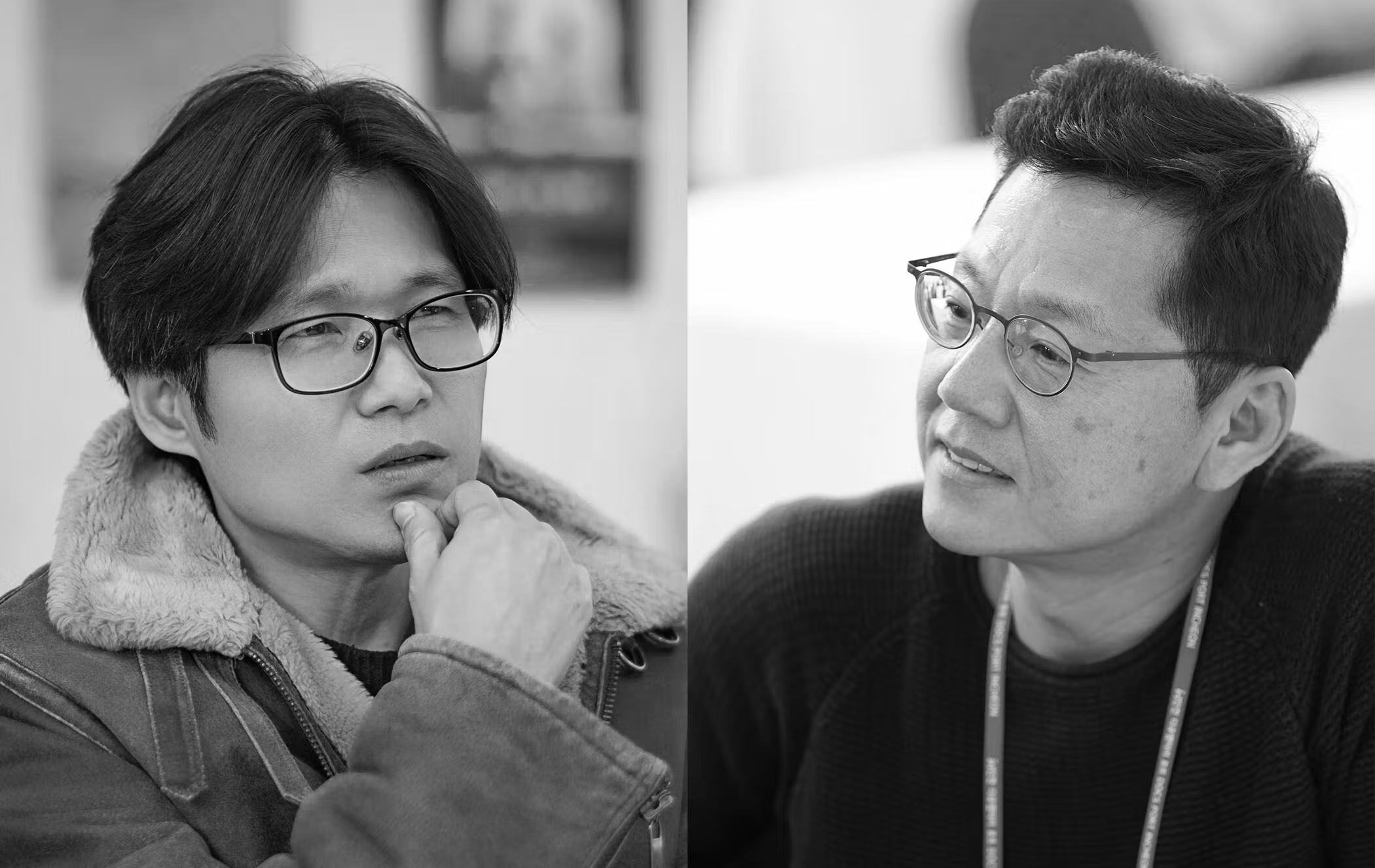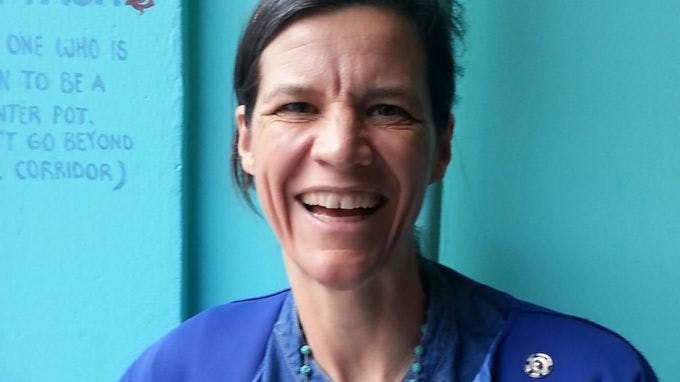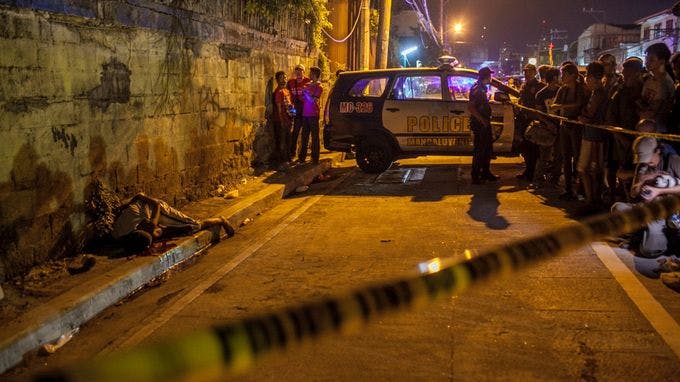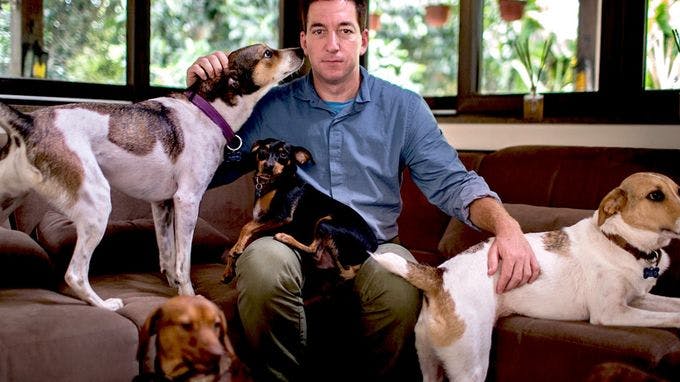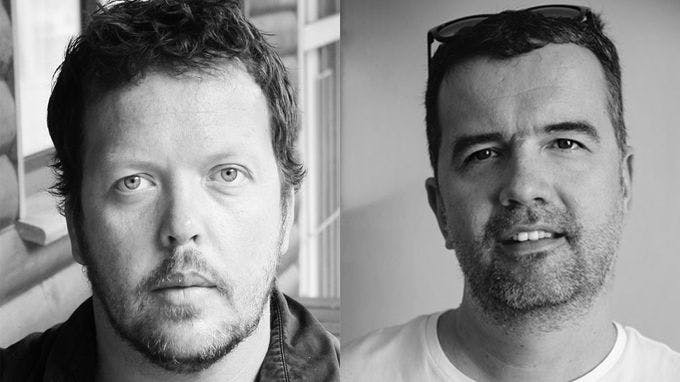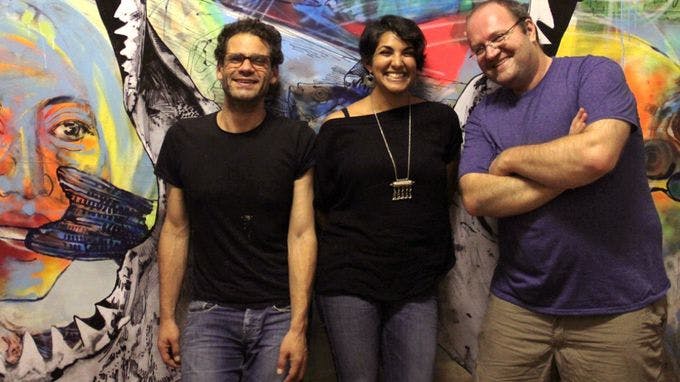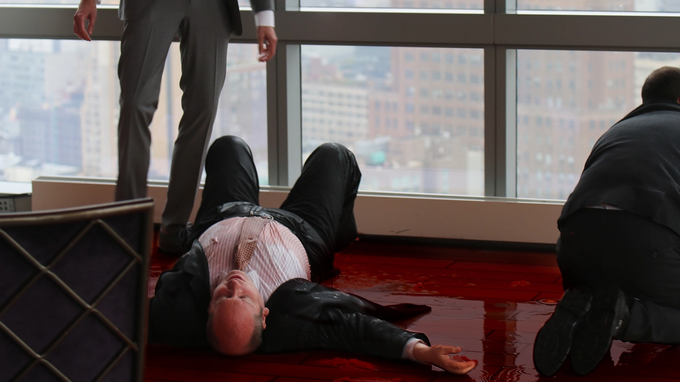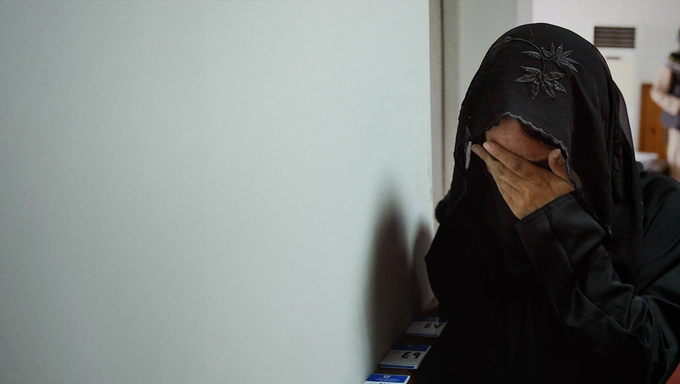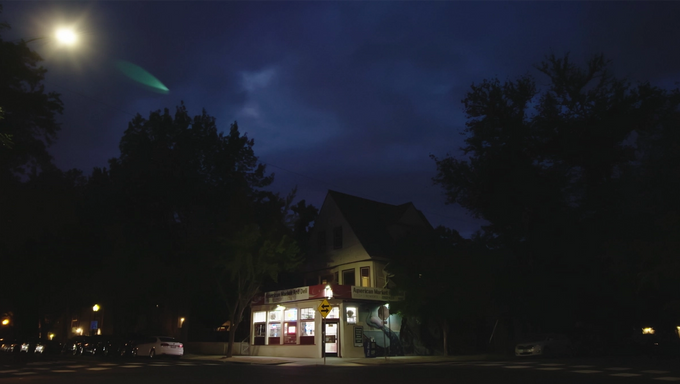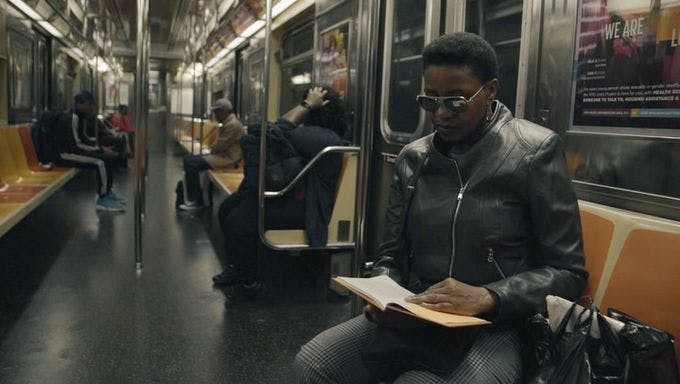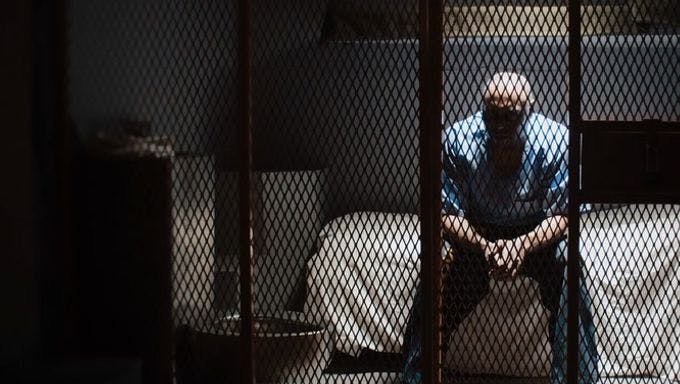Update: Since this interview was first published, In the Absence was nominated for the Academy Award for Best Documentary Short Subject, making it the first-ever South Korean nominee for the category.
Director Yi Seung-Jun and producer Gary Byung-Seok Kam are the dynamic filmmaking duo behind In the Absence, a World Press Photo award-winning short about the 2014 Sewol ferry disaster in South Korea.
In the Absence begins on April 16, 2014, the day the MV Sewol, a passenger ferry carrying over 400 people—including school children—sank near Jeju Island. Over 300 people lost their lives that day. In the wake of this horrific incident, people across South Korea, including those whose loved ones had perished, sought transparency and accountability from national authorities. Years later, these families and their supporters are still fighting for answers for what happened on that fateful April morning.
In the Absence, which began production in 2017, combines intimate interviews with victims’ families, survivors, and rescue divers with breathtaking archival footage and audio recordings obtained from the South Korean authorities. The result is a compelling yet compassionate story of the people whose lives were forever changed by this tragedy.
In the Absence premiered at DOC NYC in 2018, where it won the grand jury prize in the festival’s shorts competition and later screened at the International Documentary Film Festival Amsterdam (IDFA). The film also took home first prize at this year’s World Press Photo Digital Storytelling Contest for Long Form. Shortly after, The New Yorker published In the Absence on its website and YouTube channel, where it has garnered over 1 million views. You can also watch the film on our website here.
Yi and Kam recently spoke to Field of Vision about choosing to make this ambitious and galvanizing film, how the conversation around Sewol has changed in the last five years, and much more.
The following interview has been condensed and edited for clarity.
How did you decide to make a film about the Sewol ferry disaster?
Yi Seung-Jun: It was a Wednesday morning in 2014 when I first heard through the media that a ferry was sinking. At first, it seemed quite serious. Most of the passengers were high school students on their school trip. I was wishing that no one died or got seriously hurt. Soon, a news report came out that all the passengers were rescued, which turned out to be not true.
In the afternoon of that day, I watched TV news, which said more than half of the passengers were still trapped in the ferry, which was already under the water.
Since then, we heard about the ferry sinking every day, and many of the students seemed to be dead. It was really shocking and sad. My colleague directors visited the harbor closest to the site. They thought there must be something [suspicious] regarding the government’s reaction, and that something was being hidden by the government as well as by the mainstream media.
I was suggested by one of the directors to join the team, but at that time I was busy editing my feature documentary. Moreover, I did not think that I could press the record button in front of the enormous sorrow and fury of the victims’ or missing students’ families. When I saw any teenagers wearing school uniforms in a bus, on the street, I burst into tears without realizing.
From October 2016 to March 2017, there were a series of Candle Protests in South Korea, calling for the resignation of then-president Park Geun-hye. Millions of people, including myself, took part in the protests.
It was at the end of 2016 when Field of Vision contacted me, asking if I was interested in making a short, cinematic documentary about any story related to the protests, or the then-current situation. I talked with my producer, Gary, and we suggested the story of the Sewol ferry disaster to Field of Vision, how the disaster was connected to the protest, and why people were so angry about the handling and attitude of the government about the disaster.
It’s been almost three years, but still the victims’ families and the civilian divers were living in pain, with the truth still not revealed. However, some people made those arguments: we should not talk about the disaster anymore, the victims’ families have got enough compensation, let’s forget about it, do not make use of the disaster politically, and so on.
I came to think that if there is still broadly rooted pain in there, then we need to go back to the time when the pain had begun. We need to look at it and find out what caused the pain, and where it had started. That is why I decided to make this film.
Gary Byung-Seok Kam: I had this weird experience about six months before the tragedy happened. I got an email from an American producer who was ready to make a documentary about a mysterious photographer called Ahae. He described himself as a sportsman, post-structuralist photographer, artist, and nature lover. I was really, really curious about him. So I started to do some research. Later it came out that he was the owner of the ferry company.
The next year, in April, actually, while I’m still doing research, I actually booked [the Sewol ferry] with my partner. It is the only ferry from Seoul to Jeju Island. But the last page [on the website] was all broken. The next day, one of my friends said, "Oh, why bother to go all the way by motorbike? You can just send the motorbike [via airplane]."
So I had second thoughts. I just booked an airplane. The next day, before I went out, I saw news that the ferry was sinking. For a moment, I had goosebumps all over my body. I realized that that was the ferry that I booked.
You're saying that you were almost on that boat? But by some chance happening, you weren't?
GK: Yes. Only two people among the victims’ families know this. Because I could never tell them that I was lucky and didn't get on. After that moment, I always felt that I needed to do something.
First of all, I didn't like the way the media treated the tragedy in general. Three months before Field of Vision approached [the film’s director Seung-Jun Yi], actually one of the victims’ family members contacted me, asking if I'd be interested in looking into all this.
So we had a talk. I just told them, “I'm sorry, I'm not capable of finding out the truth, not at this moment, but I will find out.” The government definitely deserves the criticism, but I just want to take one step back and see. It was just too emotional.
[The victim’s family member] liked the idea. We kept developing the idea, not in a hurry. Then Field of Vision contacted Seung-Jun, so Seung-Jun and I discussed. He knew that I had started thinking about a Sewol documentary. We had a long talk. The Candle Protest itself is a great subject, but it's too deep for a short documentary. So we both thought that the Sewol case could also be a strong subject as it was one of the main issues that brought people to join the Candle Protest.
The film is very, very meaningful for, and also to the victims’ family association. Even though it was a really tragic story, they are very happy that the story gets to be shared with a global audience, a bigger audience.
I actually wanted to touch a bit on that. So the film has been shown at several festivals. It's now online at the New Yorker and also on our site. So what has it been like to share this particular story with a larger international—and now digital—audience? What has that been like for you, for Seung-Jun, for the families?
GK: First of all, the victims’ family association—the families—they are very, very happy. I met them right after the New Yorker’s YouTube video hit more than a million [views]. So I told them that happened. They were very, very happy. And they were very surprised. It seemed that most of the comments were written in English. I was sitting with them in a café, and I read the comments. They were moved, and they were pleased to find that the comments were from all different countries, and are actually not so different from what they have gotten from Korean audiences. They were glad that the pain they are going through, the tragedy caused by the incompetence of parliament could be actually [communicated] well with a bigger audience. It's not that they want to be an object of pity. They want people to know what happened.
Any innocent, ordinary citizen of any society could fall victim to tragedy. That's what the [families] want to tell [the world]. That's why every citizen [should] want to show more interest in the safety and regulations for the society, any society. That's what they wanted. They wanted to convert the tragedy into a platform for every society.
Do you think that public discourse around the Sewol atrocity has changed in the last five years? If so, how?
YS: As far as I know, public discourse has not changed a lot. I mean, there were already people who disliked to talk about this issue. Most of them were supporters of the then-government, the then-president and the ruling conservative party. And politicians put a kind “scarlet letter” on anyone, any media, any group, any politician who supported the victims’ families, who criticized the government’s reactions. The yellow ribbon is the symbol of the slogan, “Do not forget the day: April 16th, 2014.” People used to put a yellow ribbon sticker on their cars. I also used to put a yellow ribbon sticker on the rear window of my car. Once, a man asked me what it was and he said it’s better to take it down. I asked why, and he just said, “Well… it is not good to put this ribbon on.” That was it. I was lucky because he did not keep asking. However, there have been people who insulted the victims’ families or were aggressive with people who support the victims’ families, the civilian divers, etc. Their attitude has not changed at all.
But the media has changed after the power shift, I mean, after the then-president, Park Geun-Hye resigned from her office, and the opposite party candidate became the new president of South Korea.The attitude of media has changed. Most of the mainstream media were with the then-government. They did not report the issue well. They wanted to hide as much as possible. But due to the power shift, mainstream media began dealing with many kinds of stories related to the ferry sinking disaster. This project was supported by the governmental fund, and I applied for the fund after the then-president resigned from her office. It would not have been possible to get funded if it were under the previous government.
GK: We cannot treat this as a car accident. We have to find out who's still [accountable]. At this moment, only one person [has been charged]: the captain of a patrol boat. So the families, and those who support these families, they demand justice. Not as revenge, but without setting a good example of punishment or taking responsibility, there won’t be a first step to be a better society in the future.
In the Absence features a lot of archival footage and audio from a variety of sources. There's stuff from broadcast TV, conversations between government officials, and the crew on the ship, cell phone videos from school children on the ship, and so on. Can you tell me about the process of finding those materials and then deciding which pieces of footage or audio to use? Because it seemed like there was such a large set of data that you were able to pull from.
YS: As I said, some of my director colleagues had been filming the situation after the ferry sinking, establishing the 416 Documenting Group. The aim of the group was not only to make their own film or TV program related to the disaster but also to support other directors making documentaries regarding the issue. I talked with them about this project, and they eagerly decided to support this project. They’ve already got tons of footage, some were filmed by them, some were obtained with the help of media, congressmen, et cetera. We were provided with all of that footage. And the cell phone videos provided by the association of the victims’ families, with their permission.
When I looked through all of the footage, I first decided to make a timeline of the incident itself, to make the audience feel what was going on on that day.
GK:The most important thing was to secure the footage from the actual Coast Guard choppers, the patrol boat footage, and also all the conversations among government agencies. Actually, that was only distributed to major broadcasters, just for some parts for the news report. As independent filmmakers, it was extremely difficult for us to secure the footage, but the family association really helped us in contacting one of the congressmen. He was a very well known human rights lawyer. He represented the family association for a long time, and later was elected as a congressman.
Through his office, we could secure the footage and the government recordings. We contacted the broadcasters, and they refused to share footage with us. So the only possible way was to have someone in parliament help us clear that copyright issue. The government will never raise any questions with copyright issues to Congress. So that's how we secured most of the footage.
I wanted to transition into asking you about the film having these really incredible moving interviews with the victims’ families as well as a few of the divers. What was it like to film with them? How did you gain their trust?
YS: The association of the victims’ families decided to support this project officially. We always discussed what to film and whom to interview with the association. One of the most important rules of mine on the shooting location is to try not to [impose]. I just let my characters be there, stay as they are, move as they want. Then I just keep observing them, capturing important moments or emotions as they are. Through this process, characters do not feel bothered, and I do believe that it helps me to gain the characters’ trust.
GK:At the time, many family members were about to go to an island very close to where the ferry sank. There are no hotels or anything, only several private residents of fishermen. It's only two kilometers away from the mainland. We were allowed to join, not knowing where to stay, what to eat… And we ended up staying on a floor, and spent two days on the island with many family members.
It was really depressing, first of all, to watch them because—especially the fathers—no one could sleep without drinking. Some were drinking two liters of Korean vodka [each night]. At the same time some were very hostile to journalists—any camera. They felt they had been betrayed by journalists for many years, for almost three years.
When the Sewol ferry was brought into the port [at Jindo], we once again stayed three days [with the family]. We did the same thing. We didn't ask anything.
The family members took turns watching [the port] because they didn't trust the government [to not remove evidence]. They set up a watchtower. At least three to five people, family members, were always on the island at once for three years.
What was it like for you and Seung-Jun to be around so much grief and pain throughout this whole process? How did it change your perspective on the incident and in general?
GK: I am sure that Seung-Jun had a more stressful time, but for me, I have this strong feeling of responsibility to do something for them, and making a film and making their story into a documentary was the only thing I could do for them. And also watching their grief, anger, and frustration, actually, as a filmmaker, it was a great lesson. That makes me think again about how we as filmmakers should treat the people in pain, when we hold the camera or when we want to make stories; to be respectful and hold that distance. Seung-Jun was the only independent filmmaker the family allowed to get in [to the port]. After a family member managed to get a personal look at the salvaged ferry and then came out of the gate, this TV cameraperson ran to her and put the camera right in her face. One of the fathers shouted and swore at camera, "Are you happy? Are you happy that you could shoot this woman crying and in pain? This is what you want?"
When the mothers came out of the gate, Seung-Jun just [fell] back. We moved aside just enough to get the whole scene.
What do you hope future audiences will learn, gain, or feel when watching this film?
YS:We, human beings, are vulnerable to “time.” As time goes on, we forget many things. Time makes us dull. It is like a black hole absorbing our [emotions]. Isn’t it scary to become dull? I want people to remember the day, remember what happened on that day and what was going on, what we told each other. And I hope people do not forget that if some system fails to operate correctly, it results in terrible pain in the end. The pain might not be curable. Please wake up and keep your eyes on [those responsible].
